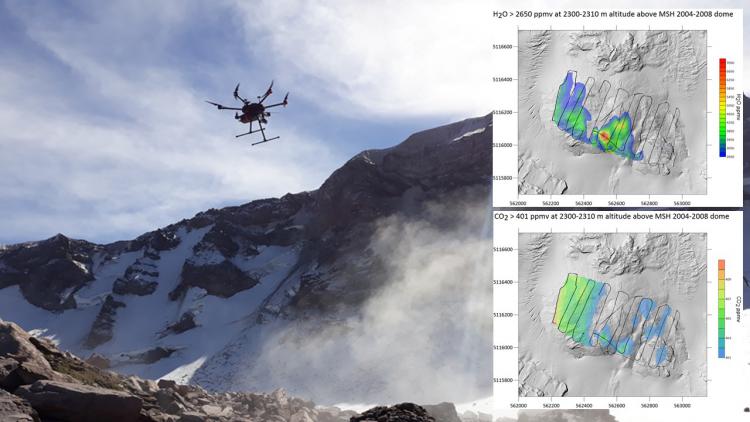The USGS Cascades Volcano Observatory utilizes a multi-rotor unmanned aircraft system (UAS) outfitted with a miniature USGS-developed MultiGAS sensor to measure quiescent gas emissions above the 2004–2008 lava dome within the crater of Mount St. Helens. These new technologies allowed the team to characterize degassing at Mount St. Helens in unprecedented detail. The UAS survey confirmed that carbon dioxide (CO2) emissions from the 2004–2008 lava dome are extremely low and that water vapor constitutes the vast majority (> 99%) of present-day gas emissions. Much of this water vapor is not derived from magma, but instead is produced when shallow meteoric and surface waters (e.g., snowmelt) come into contact with hot dome rocks, generating steam. Results also allow scientists to measure fumarolic heat discharge at Mount St. Helens. The UAS fills an important monitoring role at volcanoes; its small size and maneuverability allow scientists to use portable monitoring technologies like the MultiGAS in hazardous areas. The data are combined with those collected using traditional manned aircraft and at permanent monitoring stations to gain a better understanding of gas emissions at Mount St. Helens. The successful application of these technologies at Mount St. Helens demonstrates the importance of these surveys in the Cascade Range and at other active volcanoes around the globe to provide critical monitoring data to forecast volcanic hazards.
https://www.usgs.gov/media/videos/first-mission-usgs-uas-monitors-gas-emissions-mount-st-helens-ad

A multi-rotor UAS equipped with a MultiGAS sensor is flown over the 2004–2008 lava dome at Mount St. Helens to detect and measure volcanic gas emissions. Water vapor (H2O) and carbon dioxide (CO2) concentrations measured from the survey are plotted on the right. Photo credit: Liz Westby, USGS.

